How to Move to Canada? - Steps and Criteria!
Your Quick 30-Second Answer!
How to move to Canada? There are several pathways like the Express Entry Program for skilled workers, Family Class Sponsorship for family reunification, and LMIA Work Visa for those with Canadian job offers leading to permanent residency. The Provincial Nominee Programs (PNP) require a job offer and residency in the nominating province, while the Canadian Investor Immigration targets high net worth individuals investing in Canada. Each pathway has specific qualifications and requires documentation to verify employment, education, and personal history. The Express Entry Program is often the fastest route, processing most applications within six months. Canada's welcoming approach to immigration is evident in its plan to accept a significant number of new permanent residents in the coming years
For an in-depth overview, please see the "Table of Contents" below.
Discover Different Pathways to Learn How to Move to Canada!
Welcome to this easy-to-follow guide on how to move to canada, our exploration of the enriching experience and benefits that moving to Canada offers. This diverse and welcoming country is not just a place on the map, it's a destination for new beginnings and a hub of opportunities.
TABLE OF CONTENT
Basic Introduction
1. Overview to Move to Canada?
2. Temporary or Permanent Residence
PATH 1: Temporary Residence
3. PATH 1: Temporary Residence
3.1. Who Qualifies for Temporary Stay?
3.2. How to go to Canada Temporarily?
3.3. How to Apply under this Program?
3.4. Summary: Wrap Up
PATH 2: Permanent Residence
4. PATH 2: Permanent Residence
4.1. Who Qualifies for Permanent Stay?
4.2. How to go to Canada Permanently?
4.3. How to Apply under this Program?
4.4. Summary: Wrap Up
Additional Resources and Support
5. Common Questions (FAQs):
6. Useful Resources
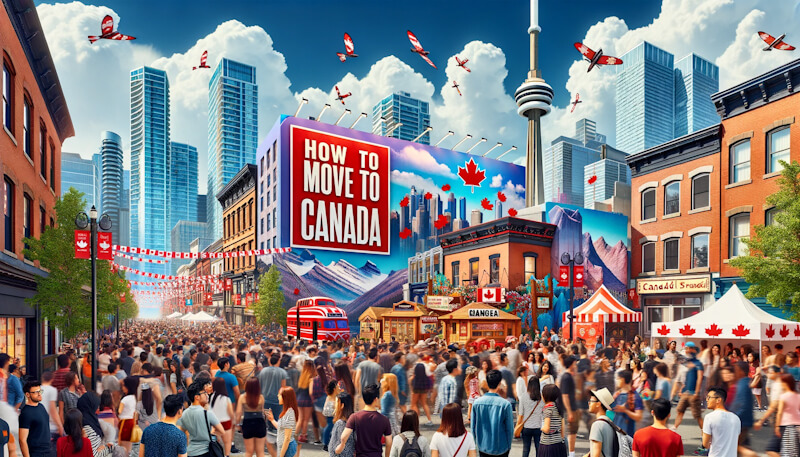
1. Basic Overview: How to Move to Canada?
This guide is your secret weapon to Canadian permanent residence. Primarily, this guide is for anyone who wants to learn about immigration to Canada. If you find the official rules and documents about the requirements to move to Canada confusing, this guide can be your helpful friend. Whether driven by economic opportunities, familial ties, or the pursuit of safety, Canada offers a range of avenues including provincial nomination programs. Plus, it's packed with insider secrets to help you shine brighter than the rest when you apply! Understanding the pathway to permanent residence is important for those seeking a long-term future in the country. This guide is here to make everything clearer and simpler for you.
Moving to Canada involves several pathways, each with its own set of requirements. Here's a brief overview of the options:
- 1. Express Entry Program: This is a popular choice for skilled immigrants who want to live and work in Canada. It includes sub-programs like the Federal Skilled Worker Program (FSWP), the Federal Skilled Trades Program (FSTP), and the Canadian Experience Class (CEC). Provinces and territories also use this system for their Provincial Nominee Programs (PNP) to meet local labor market needs.
- 2. Family Class Sponsorship: This program allows Canadian citizens or permanent residents to sponsor their family members, including spouses and children under the age of 22, to immigrate to Canada. However, sponsoring parents or grandparents might not be possible at present, but they can be brought under the Super Visa Category.
- 3. LMIA Work Visa: This route involves obtaining a Canadian job offer, where the employer must apply for a Labour Market Impact Assessment (LMIA) through Service Canada. Upon approval, the applicant can apply for a work permit, which can lead to permanent residence.
- 4. Provincial Nominee Programs (PNP): PNPs are tailored to the specific needs of Canada's provinces. Applicants usually need a job offer from a Canadian employer and must intend to reside in the province that nominates them.
- 5. Canadian Investor Immigration: Designed for high net worth individuals who have managed or owned businesses overseas. It requires a substantial investment in Canada's economy and includes programs like the Federal Investor Program and the Quebec Investor Program.
Each immigration program has specific qualifications and documentation requirements. You'll need to verify your work experience, education, identity, and provide criminal and medical history. It's important to determine which program suits you best before applying.
Canada plans to welcome a significant number of new permanent residents in the coming years, indicating a welcoming attitude towards immigrants. Express Entry is generally the fastest way to immigrate, with most applications processed in six months or less.
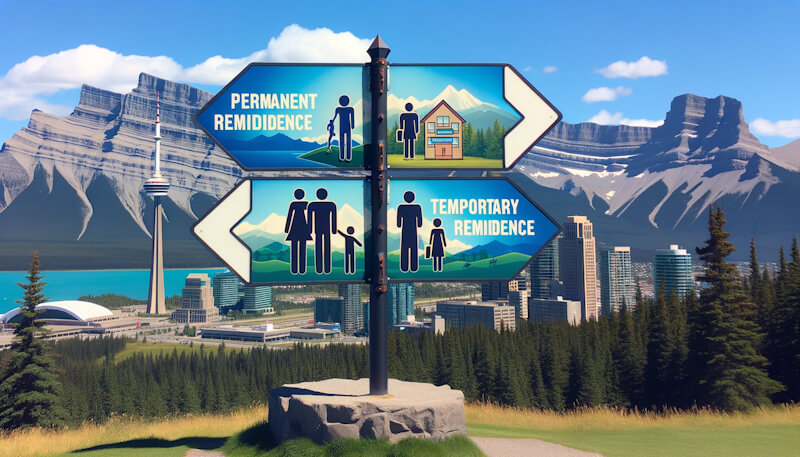
Difference between Temporary and Permanent Residence
Understanding how to move to Canada starts with knowing the key differences between Temporary and Permanent Residence. Both have unique benefits and conditions, much like choosing between a short-term rental and buying a home.
1. Temporary Residence: A Short Stay
Temporary residence includes visas like Student, Work, or Visitor Visas. These allow you to live in Canada for a set time. Think of it as a temporary home where you can study, work, or enjoy the beauty of Canada, but with a time limit.
- Privileges: Temporary residents can enjoy living in Canada, access to world-class education, and work experiences.
- Responsibilities: They must obey Canadian laws, and the duration of their stay is limited.
- Long-term implications: Staying temporarily does not directly lead to Canadian citizenship. It's more like a test drive before making a bigger commitment.
- What Makes an Applicant a Strong Candidate
- Intention to Return: Showcase strong ties to your home country, proving you'll return after your stay.
- Financial Stability: Highlight sufficient funds for your stay and return trip.
- Employment or Education: If working, show your employer's legitimacy. If studying, present an acceptance letter.
- Purpose: Clearly state your short-term intent, be it work, study, or travel.
2. Permanent Residence: Your Path to Becoming a Canadian
Permanent residence is like planting your roots in Canada. It's for those who wish to stay long-term or forever. You can work, live, and study anywhere in Canada, and after some time, even apply for Canadian citizenship.
- Privileges: Includes most social benefits that Canadian citizens receive, like health care.
- Responsibilities: You must pay taxes and respect all Canadian laws.
- Long-term implications: It's a step towards becoming a Canadian citizen. You're committing to being a part of the Canadian community and culture.
- What Makes an Applicant a Strong Candidate
- Skills and Experience: Emphasize unique skills or experiences that make you a long-term asset to Canada. For example, if you're an IT expert, how can your skills contribute to the growing tech sector in Alberta?
- Community Involvement: Demonstrate a strong inclination towards becoming a part of Canadian society. Previous volunteering, community services, or a history of positive contributions can be highlighted.
- Cultural Adaptability: Showcase your adaptability and how you plan to weave yourself into the Canadian cultural fabric, adding diversity and richness.
Professional Insight: To stand out, tailor your application to show not just your skills but also how you align with Canadian values and communities. It's not just about knowing how to move to Canada and being qualified, but also about fitting in and contributing to the Canadian way of life.
2. Make Your Decision: Temporary or Permanent Residence
Choosing Your Path: What to Consider
1. Goals and Duration of Stay: Ask yourself, "Do I want to stay in Canada for a few years or make it my permanent home?" Your answer guides your choice.
2. Commitment Level:Temporary residence might feel less daunting if you're not ready to fully commit to moving to Canada. Permanent residence is for those sure about making Canada their new long-term home.
3. Career and Education Goals: If studying at a top university or gaining international work experience is your goal, temporary residence could be ideal. For those seeking stable, long-term employment, permanent residency is better.
Choosing this early helps you skip confusion later on. It's like choosing the right road on a trip – when you know your destination, reaching there becomes much simpler. Once you find out whether your goal is to go to Canada temporarily or permanently, knowing the available options helps you to make an informed choice.
Next, let's take look at these options in detail:
3. OPTION 1: Temporary Residence Path:
How to Move to Canada temporarily? Canada has different programs for people who want to stay for a short time. Whether it's for a vacation, school, work, or a business trip, there's a program that's right for you. Let's look at Temporary Residence Programs more closely:
3.1. Who's this program for?
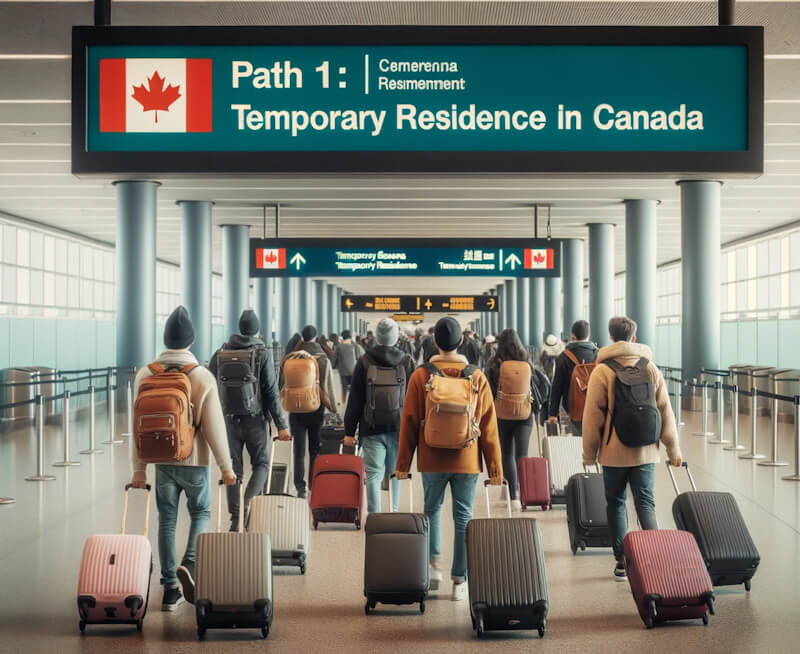
If you're planning on staying in Canada for just a short time and not forever, the Temporary Residence Program is what you need. Different folks might have different reasons for this. Here's a simple rundown:
1. Tourists: If you are coming to see the sights or visit family and friends.
2. Students: If you are coming to study in schools or colleges in Canada.
3. Workers: Got a job offer in Canada for a short period? This is for you. It covers seasonal jobs, company roles, or jobs from special deals like NAFTA/USMCA.
4. Business Visitors: Here for meetings or conferences? This one's for you, as long as you aren't planning to work here.
5. Super Visa Holders: For older relatives of Canadians who want to visit for a longer time and don't want to keep renewing their visa.
Through this program, people can come to Canada for specific reasons, but it doesn't mean they can stay indefinitely. That said, for some, like workers and students, there might be opportunities later on to make Canada their permanent home.
3.2. How to Move to Canada under Temporary Residence?
If you want to come to Canada for a short while, you'll need the right visa or permit. The one you need depends on your reason for visiting: for fun, to study, to work, or for business stuff. Let's make it clear which one you need:
3.2.1. For the Vacationers and Visiting Family (Visitors):
- What’s it called? Visitor Visa or Temporary Resident Visa (TRV). Also visit, 'How can I visit Canada?'.
- What does it let you do? Travel, sightsee, visit family and friends, and enjoy Canada.
- How long can you stay? Most visitors can stay up to six months. But the border officer will tell you when you must leave.
3.2.2. For the Knowledge Seekers (Students):
- What’s it called? Study Permit
- What does it let you do? Attend a school, college, or university in Canada.
- How long can you stay? For the duration of your study program plus an extra 90 days.
- Important note: Before applying, make sure you've been accepted by a school in Canada! They'll send you a letter that you’ll need for your application.
3.2.3. For Those With Jobs in Canada (Workers):
- What’s it called? Work Permit (There are various types like the Temporary Foreign Worker Program and the International Mobility Program, but let's keep it simple for now!)
- What does it let you do? Work at a job in Canada for a set time.
- How long can you stay? It depends on your job contract and the type of work permit you get.
- Important note: Usually, you need a job offer from a Canadian employer before you apply. They'll give you a document (sometimes called an LMIA) that you'll need for your application.
3.2.4. For the Business People (Entrepreneurs):
- What’s it called? Business Visitor Visa
- What does it let you do? Attend business meetings, conferences, conventions, etc., but not enter the Canadian job market.
- How long can you stay? Usually up to six months, but again, the border officer will let you know.
- Important note: You’re not coming to work or get a job; you're visiting for other business reasons. Having an invitation from a Canadian business can help your application!
What Next? Once you know which category fits you, you fill out some papers, pay a bit, and maybe show some other stuff like your passport or a doctor's note. Then, you wait. If Canada says "yes", get ready for your trip!
3.3. How do I Apply for Temporary Residence?
Moving to Canada as a temporary resident involves several steps, primarily determined by the purpose of your visit. Here's a step-by-step guide on how to move to Canada as a temporary resident:
3.3.1. Why Are You Going?
Figure out your reason. Common reasons people go are:
- Vacation or seeing family/friends
- Going to school
- Getting a job
- Business trips
3.3.2. Pick the Right Program or Paperwork:
Depending on why you're going, you'll need:
- Visitor Visa: Mostly for tourists and visiting family.
- Study Paper: You'll need this if a school in Canada accepts you.
- Work Paper: If a company offers you a job in Canada. There are different kinds, like the Temporary Foreign Worker one or the International Mobility one.
- Business Visit Paper: For those coming to Canada for short business stuff.
3.3.3. Are You Qualified?
There are some rules:
- Promise you'll go back home after your time's up.
- Have enough money for your stay and your trip back.
- No past crimes (they might ask for police proof).
- If you're working, your company should be okay. If you're studying, have an acceptance letter from the school.
- Be healthy (sometimes they ask for a doctor's checkup).
3.3.4. Get Your Papers Ready:
- Passport
- Two recent photos like the ones in passports
- Proof you have money
- Health checkup, maybe
- An invitation letter (for tourists) or a job offer (for workers) or a school letter (for students)
- Police paper, if they ask for it
- Some other papers that the Canadian immigration folks might want
3.3.5. Put In Your Application:
You can do this online or fill out paper forms, whatever's easier for you.
3.3.6. Pay the Money:
There's a fee for each type of application. Make sure to pay it.
3.3.7. Wait a Bit:
The time it takes can vary. If you did it online, you can check how it's going online.
3.3.8. If They Say Yes, Get Ready:
- Get a special letter and maybe a visa to show when you get there.
- Tell your school or job when you'll be there.
- Book your trip and find a place to stay.
3.3.9. When You Get to Canada:
- Show all your papers to the border officers when you land. They'll check everything and then give you the final okay.
- Don't forget, you can't stay forever on these papers. Make sure you know when you have to leave. If you end up wanting to stay for good, there are ways to change from a short stay to a long one while you're there.
3.4. In Summary: Wrap Up!
Short stay in Canada? Several Temporary Residence Programs are available.
- Tourists: Sightseeing and visiting loved ones.
- Students: Must secure a place in a Canadian school.
- Workers: Require a job offer in Canada.
- Business Visitors: Here for meetings and conferences.
Each program has its specific duration and conditions.
- These programs don't grant permanent residency; they're for limited periods.
- Want to extend your stay? There are defined procedures to follow.
Key steps:
- 1. Choose the right program for your needs.
- 2. Complete necessary paperwork.
- 3. Adhere to the terms of your visa/permit.
"Note that if you initially enter Canada as a temporary resident but are ineligible for permanent residency at this time, you may still be able to convert your status to permanent resident later (dual intent)."
Next, lets take a look at how to move to Canada as a Permanent Resident.
4. OPTION 2: Permanent Residence Path:
4.1. Who is this program for?
Canada also has special programs for those who want to make it their permanent home. Whether you have family here, possess special skills, are escaping danger, or have other compassionate reasons, there's a path for you. Let's dive deeper into these permanent residence programs:
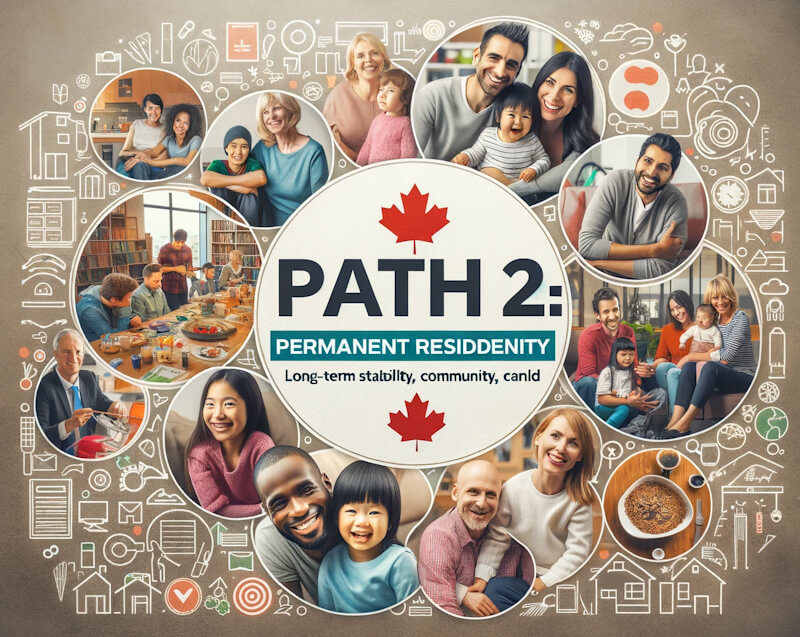
This program is for a diverse group of people, ranging from skilled workers to families and those seeking protection. It's for those of you who want to live, work, or study in Canada indefinitely and enjoy most of the same rights as Canadian citizens. Specifically, the PR program is for:
1. Economic Immigrants: Economic Class individuals with skills, work experience, and other attributes that can contribute to the Canadian economy. This includes skilled workers, caregivers, and individuals applying through provincial nomination programs.
2. Family Class: This is ideal if you've got family in Canada. A relative who's already a citizen or a permanent resident can bring you in. This typically includes spouses, dependent children, parents, and certain extended family members
3. Refugees and Protected Persons: Canada is a safe haven for refugees. If you're escaping threats or danger in your home country, you could find sanctuary here. Individuals who are fleeing persecution, danger, or civil disturbances in their home country.
Becoming a permanent resident means you can live, work, or study anywhere in Canada. It's a step closer to being a full-fledged Canadian. And remember, some start with a short visit and then decide they want to explore how to move to Canada permanently to make it forever home.
4.2. How do I come to Canada for a Forever?
If you're thinking about settling in Canada permanently, you'll need the right kind of status. Your path to getting that status will depend on your reasons for wanting to stay: maybe it's family, a job, or a unique situation. Let's break down what you might need for permanent residence:
4.2.1. For Skilled Workers and Professionals:
- What's it called? Express Entry (includes Federal Skilled Worker, Federal Skilled Trades, and Canadian Experience Class)
- What does it allow? Establish residence in Canada based on skilled work experience, education, and other criteria.
- Duration: Indefinite, with the requirement to fulfill residency obligations.
- Important Note: "How to move to Canada" via this route often requires a points-based evaluation. High-ranking applicants are invited to apply for permanent residency.
4.2.2. For Family Members of Canadian Citizens or Permanent Residents:
- What's it called? Family Class Sponsorship
- What does it allow? Live, work, and study in Canada as a permanent resident.
- Duration: Indefinite, as long as you meet residency obligations to maintain status.
- Important Note: Your Canadian family member will need to sponsor your application, ensuring they can support you financially.
4.2.3. For Those with Provincial Endorsements:
- What's it called? Provincial Nominee Program (PNP).
- What does it allow? Reside in a specific Canadian province that nominates you based on its labor market needs.
- Duration: Permanent, as long as residency obligations are met.
- Important Note: Before applying, ensure you meet the criteria set by the specific province or territory.
4.2.4. For Entrepreneurs and Investors:
- What's it called? Business Immigration Program
- What does it allow? Establish and operate a business in Canada or invest in Canadian enterprises.
- Duration: Permanent, with the standard residency obligations.
- Important Note: Potential applicants should have a substantial business or investment background. Different provinces may have their investor or entrepreneur streams.
What Next: Once you've identified the right category that suits your needs for "How to move to Canada," the next steps involve documentation, application submission, and fees payment. Depending on the category, you might also require a medical examination, police clearances, and language proficiency tests.
4.3. How do I Apply for Permanent Residence?
Relocating to Canada as a permanent resident requires a systematic approach, largely depends upon your purpose and eligibility for immigration. Here's a step-by-step guide on how to move to Canada as a permanent resident:
4.3.1. Why Are You Going?
Figure out your reason. Common reasons people go are:
- Family reunification
- Employment opportunities
- Business or investment ventures
- Seeking refuge or protection
4.3.2. Choose the Appropriate Pathway:
Your reason for migrating dictates the program:
- Family Class Sponsorship: For family reunifications.
- Express Entry: Tailored for skilled professionals.
- Provincial Nominee Program (PNP): Based on specific provincial requirements.
- Business Immigration Program: For investors and entrepreneurs.
4.3.3. Are You Eligible?
Each program has specific criteria:
- Show intention to reside in Canada permanently.
- Demonstrate financial stability.
- No serious criminal history (police certificates might be required).
- If seeking employment, possess a valid job offer. For education purposes, secure an acceptance letter from an institution.
- Maintain good health (medical examinations might be necessary).
4.3.4. Prepare Necessary Documents:
- Valid passport
- Recent passport-sized photographs
- Financial proofs or statements
- Medical examination reports (if required)
- Relevant letters such as job offers, invitations, or educational acceptance
- Police clearance, if required
- Additional documents as specified by Canadian immigration authorities
4.3.5. Submit Your Application:
You can apply online or through traditional paper-based methods, based on your convenience.
4.3.6. Process the Application Fee:
Each application type comes with an associated fee. Ensure timely payment.
4.3.7. Await Processing:
The duration varies based on the chosen program. If applied online, you can monitor your application status on the platform.
4.3.8. Upon Approval, Initiate Relocation Preparations:
- Procure the confirmation of permanent residence (COPR) and, if required, an entry visa.
- Inform your employer or educational institution about your arrival date.
- Plan your travel and secure accommodation.
4.3.9. Upon Arrival in Canada:
- Present all your documentation to the border services officers for verification. Post this, they'll grant the final clearance for your entry as a permanent resident.
- Always remember that as a permanent resident, you have rights and obligations. Renewing your permanent resident card and understanding your pathway to citizenship can be pivotal if you decide to make Canada your permanent home.
In Short: Securing permanent residence in Canada is a structured journey. By understanding "How to move to Canada" and following the prescribed steps, you can realize your dream of building a long-term life in this diverse nation.
4.4. In Summary: Wrap Up!
For those wondering "How to move to Canada" with a long-term vision, there are diverse pathways to Permanent Residency.
- Family Members: Reunite with loved ones already settled in Canada.
- Skilled Workers: Build a career based on qualifications and experience.
- Business Enthusiasts: Engage in business investments and ventures.
- Provincial Nominees: Align with specific provincial requirements.
Each pathway comes with its unique set of criteria and durations.
- While these programs lead to permanent residency, they require adherence to specific regulations.
- Considering upgrading your status or renewing your permanent residency card? Adhere to established guidelines.
Key steps:
- Determine the most fitting pathway based on your circumstances.
- Compile and submit all essential documents.
- Comply consistently with the terms of your permanent residency.
5. Frequently Asked Questions (FAQs)
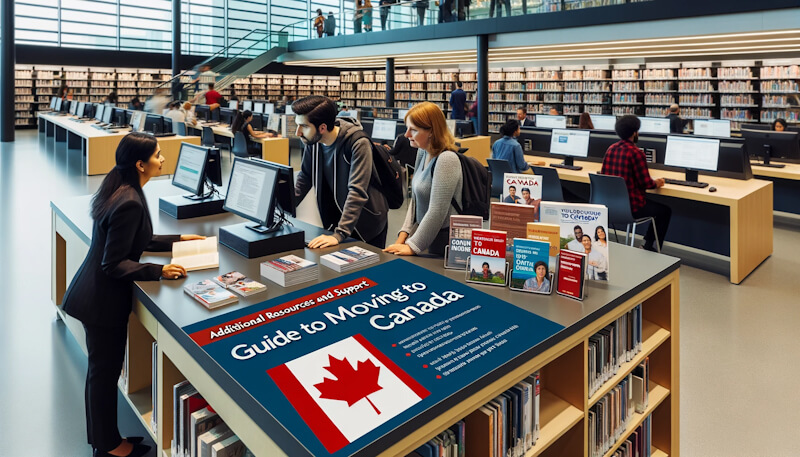
Q1: Can I just “move” to Canada?
Q1: Can I just “move” to Canada?
A: Simply "moving" to Canada without adhering to the proper immigration process isn't feasible. This process usually involves obtaining a Temporary Residence permit or applying for Permanent Residence through one of Canada's immigration programs.
Q2: What is the easiest way to immigrate to Canada?
Q2: What is the easiest way to immigrate to Canada?
A: The "easiest" way to immigrate to Canada hinges upon your personal situation and eligibility. Popular immigration programs include the Express Entry program, the Provincial Nominee Program, and the Family Sponsorship program. An immigration lawyer or consultant can help determine the most suitable path for you.
Q3: Is it hard to move to Canada?
Q3: Is it hard to move to Canada?
A: The complexity of moving to Canada depends on various factors, including the immigration program you're applying for, your personal situation, and your eligibility. An immigration lawyer or consultant can facilitate the process and enhance your chances of success.
Q4: How to move to Canada legally?
Q4: How to move to Canada legally?
A: To legally move to Canada, you'll need to secure a visa or permit through one of the immigration programs. An immigration lawyer or consultant can provide guidance on the best path for you based on your individual circumstances.
Q5: How much money do you need to immigrate to Canada?
Q5: How much money do you need to immigrate to Canada?
A: The financial resources required to immigrate to Canada can vary, depending on the immigration program you're applying for and your financial situation. For example, applicants of the Federal Skilled Worker Program need to provide proof of funds to support themselves and their family.
Q6: How much does it cost to move to Canada?
Q6: How much does it cost to move to Canada?
A: The cost of moving to Canada encompasses several factors, including the immigration program you're applying for, the type of permit you're obtaining, and your personal circumstances. Additional expenses may include medical exams and language tests.
Q7: How to move to Canada with no money?
Q7: How to move to Canada with no money?
A: Most immigration programs necessitate proof of funds to support yourself and your family, so moving to Canada with no money may be challenging. An immigration lawyer or consultant can provide advice on your best course of action.
Q8: Can I immigrate to Canada without a job offer?
Q8: Can I immigrate to Canada without a job offer?
A: Some immigration programs, such as the Federal Skilled Worker Program or the Express Entry program, allow you to immigrate to Canada without a job offer. However, other eligibility requirements need to be met.
9: How can I move to Canada from the U.S.?
9: How can I move to Canada from the U.S.?
A: Relocating to Canada from the U.S. involves the proper immigration process. This typically entails obtaining a Temporary Residence permit or applying for Permanent Residence through one of Canada's immigration programs.
Q10. How to move to Canada temporarily?
Q10. How to move to Canada temporarily?
A: To temporarily move to Canada, you'll need a Temporary Residence permit. There are several types of permits, including work permits, study permits, and visitor visas.
Q11: How can I move to Canada permanently?
Q11: How can I move to Canada permanently?
A: To permanently move to Canada, you'll need to apply for Permanent Residence through one of the available programs, such as the Express Entry program or the Provincial Nominee Program.
Q12: How can I increase my chances of moving to Canada?
Q12: How can I increase my chances of moving to Canada?
A: There are several ways to increase your chances of moving to Canada, including improving your language proficiency, gaining additional education or work experience, and networking with Canadian employers.
Q13. How long does it take to move to Canada?
Q13. How long does it take to move to Canada?
A: The duration to move to Canada is dependent on several factors, including the immigration program you're applying for and the processing times of the Canadian government.
Q14. Do I need to speak French to move to Canada?
Q14. Do I need to speak French to move to Canada?
A: Although French is one of Canada's official languages, it's not mandatory to speak French to move to Canada. Some Permanent Residence programs may require proficiency in French. An immigration lawyer or consultant can provide guidance on your language requirements.
Always make sure to check with the specific institution or official Canadian government resources for the most accurate and updated information about how to move to Canada.
6. Useful Resources:
Here are links that could be useful for individuals looking on information on how to move to Canada? Government of Canada's official immigration and citizenship website: How to Move to Canada. For advice tailored to your situation, consider talking to a legal expert or trusted immigration consultant.

Kamal Akhtar is a Canadian immigration lawyer licensed by the Law Society of Ontario. Based in Ontario, Canada. Kamal has years of experience helping foreign nationals with immigration applications and appeals. He specializes in Canadian immigration law and other complex entry solutions. Kamal dedicates himself to delivering honest, strategic, and client-centered legal solutions for every case.
Kamal's credentials include a Bachelor of Law (LL.B.) and a Master of Law (LL.M.) from Osgoode Hall Law School in Toronto. Kamal is a noted member of professional associations like the Canadian Immigration Lawyers Association (CILA), the Canadian Association of Professional Immigration Consultants (CAPIC), the Canadian Bar Association (CBA), and the Ontario Bar Association (OBA). Over 20 years of legal experience shape Kamal's insights.
Please note that the information provided on this website does not constitute legal or professional advice.
Phone: +1 (289) 216-4666 | Fax: +1 (289) 778-4745 | Email: info@kamallaw.ca



